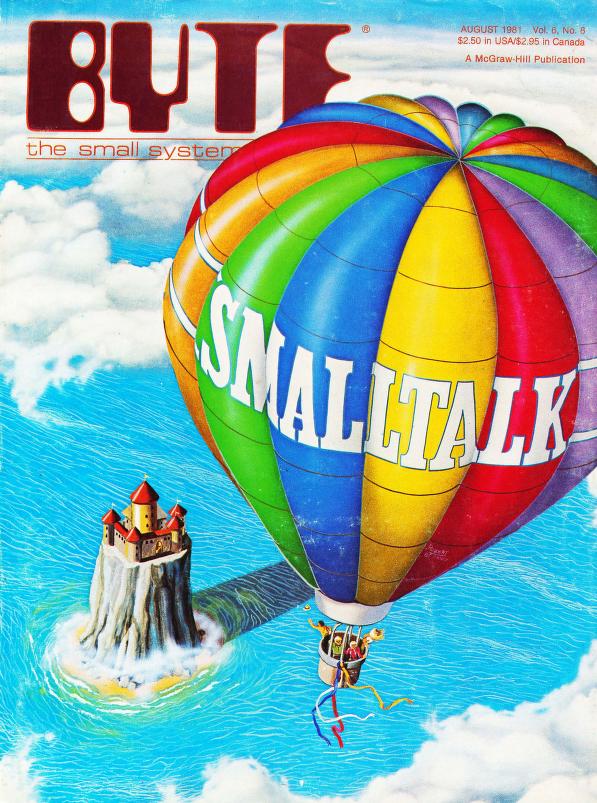Features
p.14 introducing the Smalltalk-80 System
[author Adele Goldberg]
A readers’ guide to the Smalltalk articles in this issue.
p.36 The Smalltalk-80 System
[author the Xerox Learning Research Group]
How message-sending objects are used in the Smalltalk-80 system.
p.50 Build a Z8-Based Control Computer with BASIC, Part 2
[author Steve Ciarcia]
Steve continues his description of the Z8-BASIC Microcomputer and suggests two applications.
p.74 Object-Oriented Software Systems
[author David Robson]
Object-oriented software systems provide the underlying design of Smalltalk.
p.90 The Smalltalk Environment
[author Larry Tesler]
Programming and debugging in Smalltalk are always interactive activities.
p.147 User-Oriented Descriptions of Smalltalk Systems
[author Trygve M H Reenskaug]
A Smalltalk application program will limit the user’s access to the language.
p.168 The Smalltalk Graphics Kernel
[author Daniel H H Ingalls]
The Graphics Kernel provides the interface through which all text and graphics are displayed.
p.200 The Japanese Computer invasion
[author Stan Miastkowski]
Like it or not, the Japanese small computers are on their way.
p.230 Building Data Structures In the Smalltalk-80 System
[author James C Althoff Jr]
Many kinds of data structures can be added easily to the Smalltalk-80 system.
p.286 Design Principles Behind Smalltalk
[author Daniel H H ingalls]
The design principles of a language strongly affect its power and usability.
p.300 The Smalltalk-80 Virtual Machine
[author Glenn Krasner]
The use of a Smalltalk-80 Virtual Machine allows the system to be transported easily among different 16-bit microprocessors.
322 Building Control Structures in the Smalltalk-80 System [author L Peter Deutsch]
Design of complicated control structures is easy in the Smallralk-80 language
p.348 Is the Smalltalk-80 System for Children?
[author Adele Goldberg and Joan Ross]
Although Smalltalk-80 is not meant to be used by children, application programs can be written that will allow them to be creative and, at the same time, learn about programming.
p.369 ToolBox: A Smalitalk Illustration System
[author William Bowman and Bob Flegal]
The versatile Smalltalk-80 language can create an environment for graphics design that can be used by non technically oriented people.
p.378 Virtual Memory for an Object-Oriented Language
[author Ted Kaehler]
Virtual memory techniques must be used when the active memory space needed by a language is much larger than the amount of available memory.
Reviews
p.398 Microsoft Editor/Assembler Plus
[author Keith Carlson]
p.401 BOSS: A Debugging Utility for the TRS-80 Model I
[author Scott Mitchell]
Nucleus
p.6 Editorial: Smalltalk: A Language for the 1980s
p.30 Letters
p.197 BYTE’s Bits
p.224 BYTELINES
p.392 BYTE’s Bugs
p.388 Ask BYTE
p.391 Books Received
p.391 Software Received
p.392 Clubs and Newsletters
p.394 Event Queue
p.402, 413 System Notes: Indirect I/O Addressing on the 8080: Aim-65 16-bit Hexadecimal to Decimal Conversion
p.404, 408, 414, 417, 418 Programming Quickies: A Disk Catalog for the Eighties: Alpha-Beta Tree Search Converted to Assembler; Fast Line-Drawing Techniques: Word Ujbnmarle: Binary-to-BCD Converter Program for The 8080
p.421 What’s New?
p.478 Unclassified Ads
p.479 Reader Service
p.480 BOMB, BOMB Results
